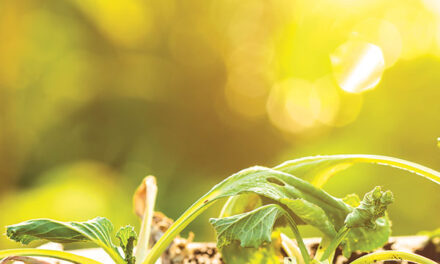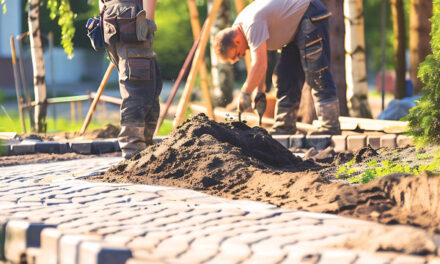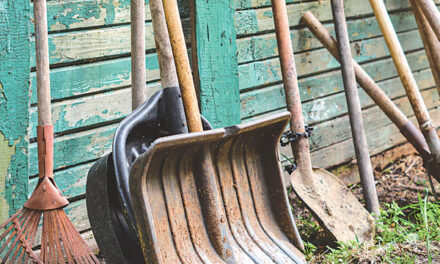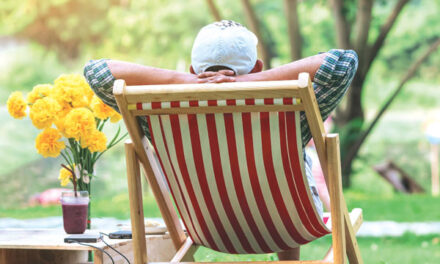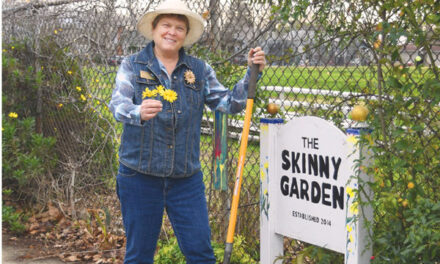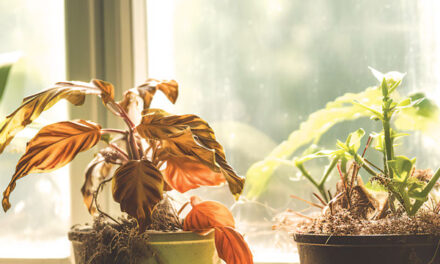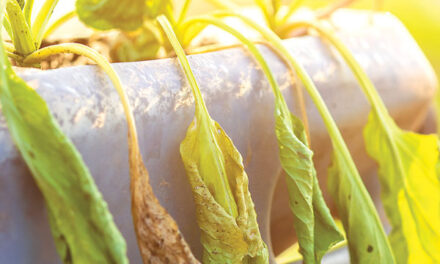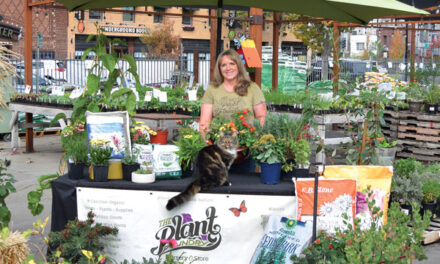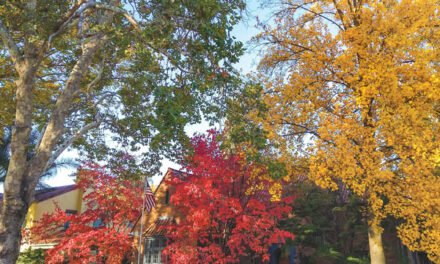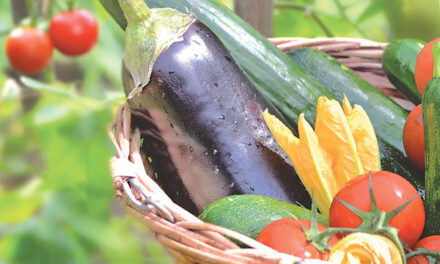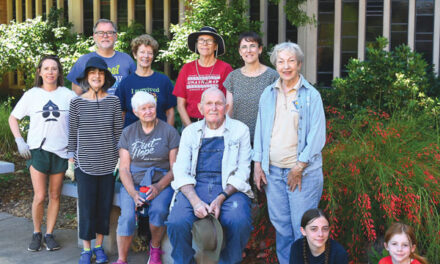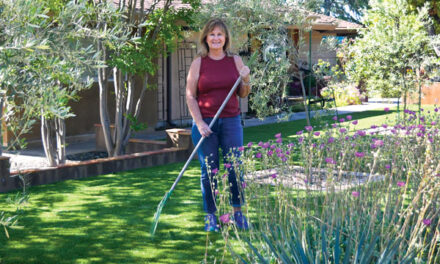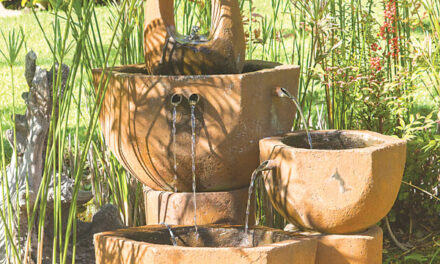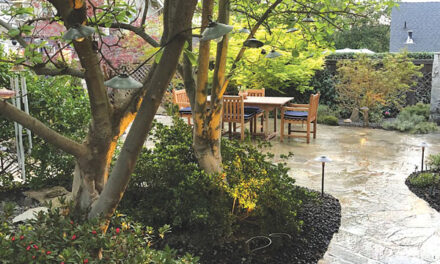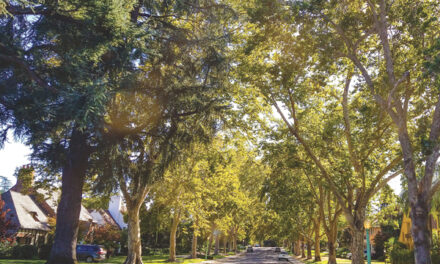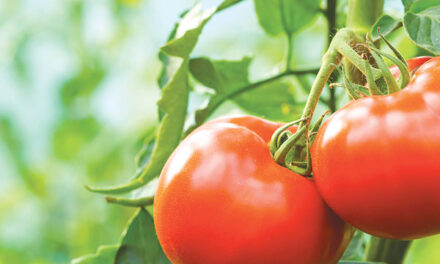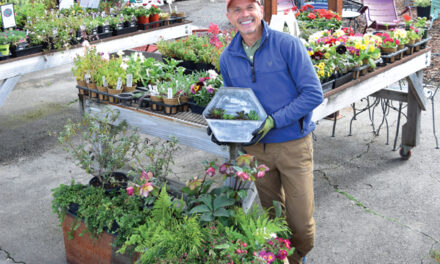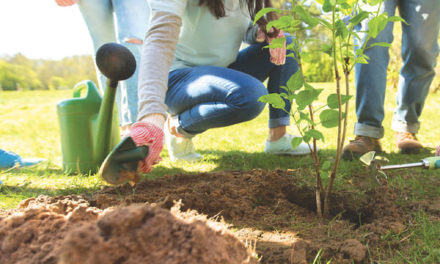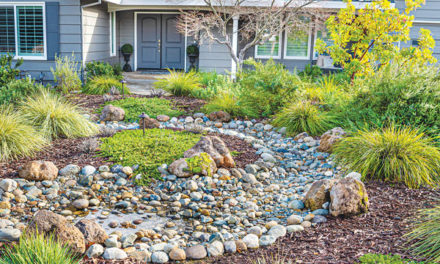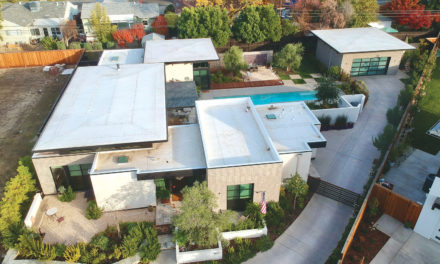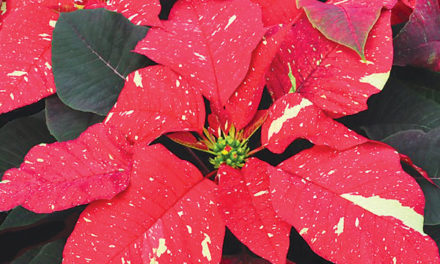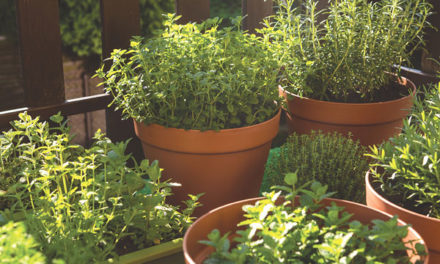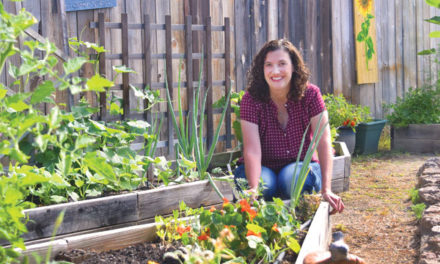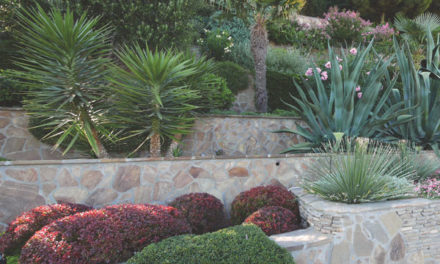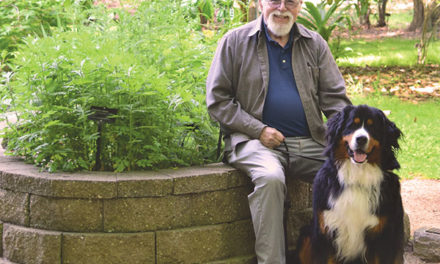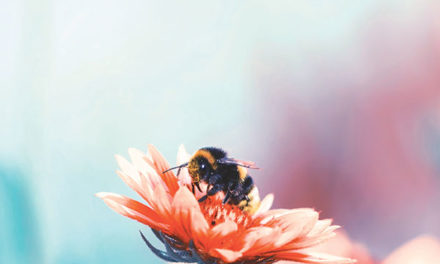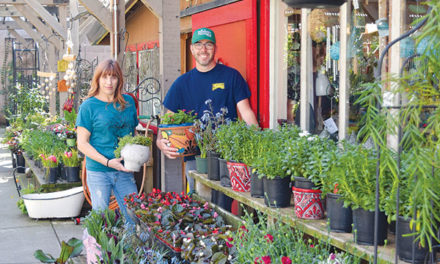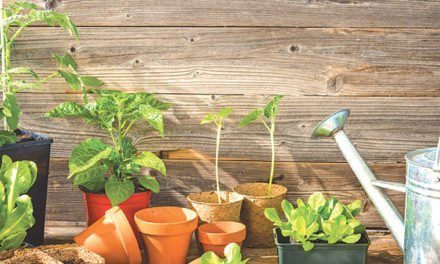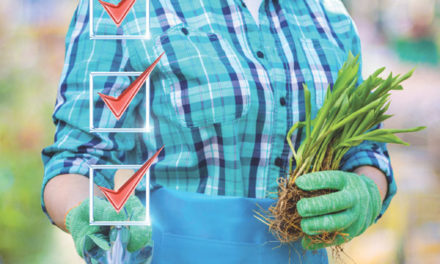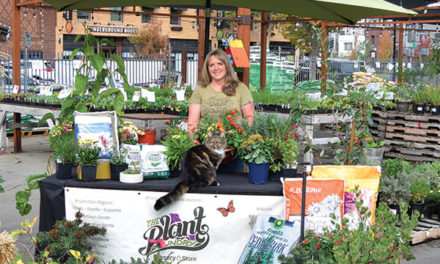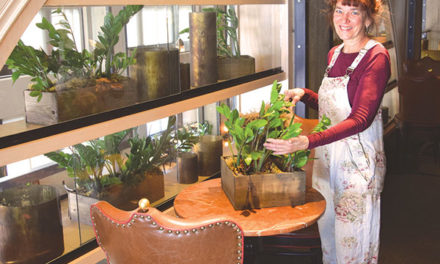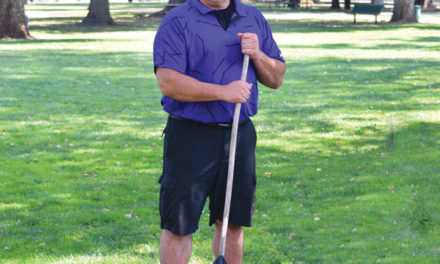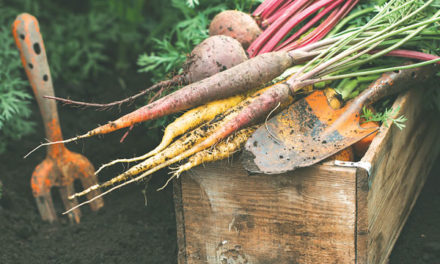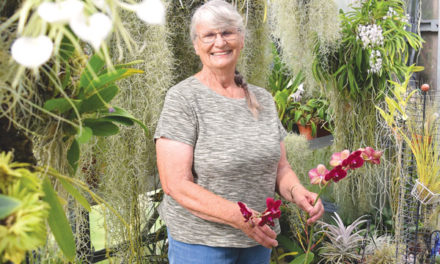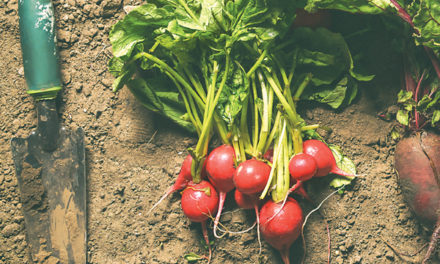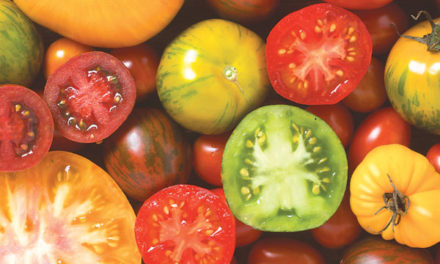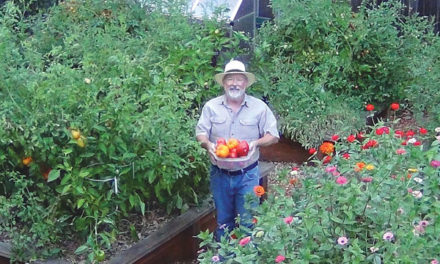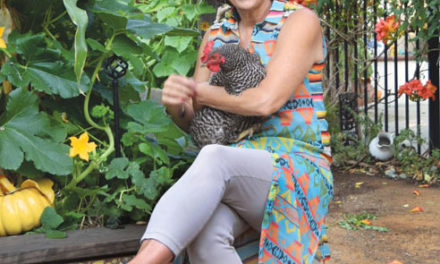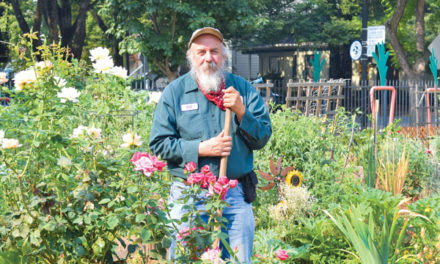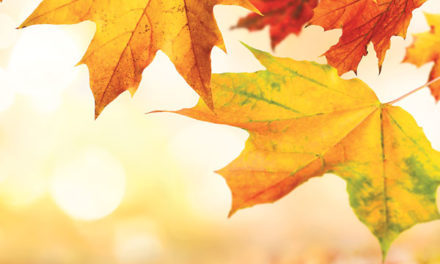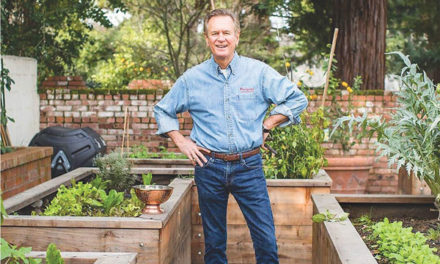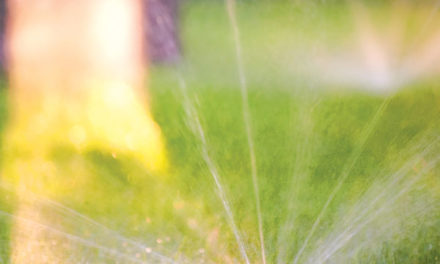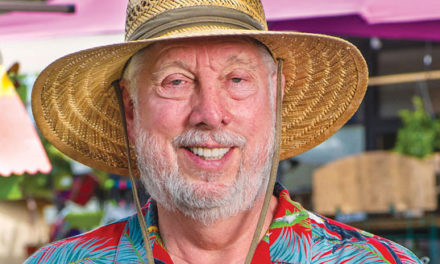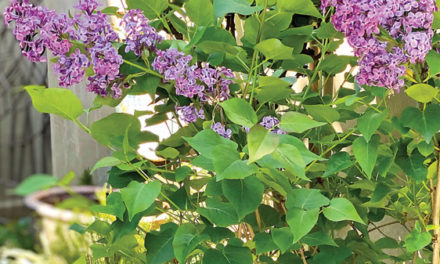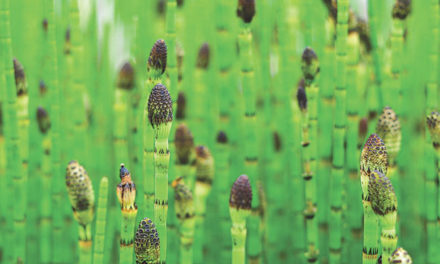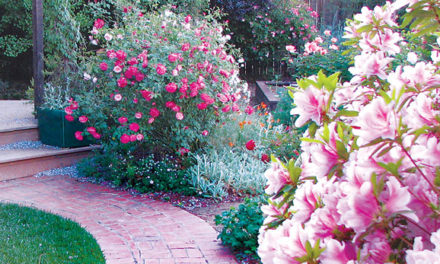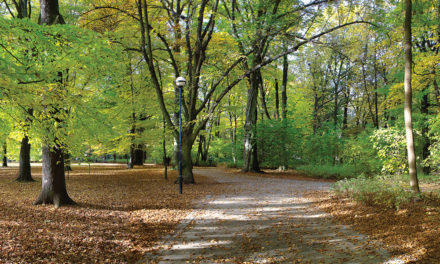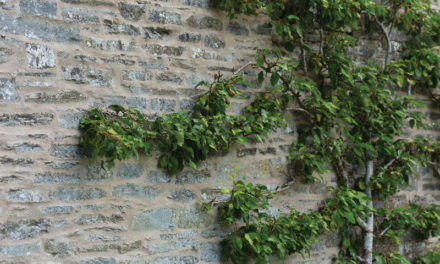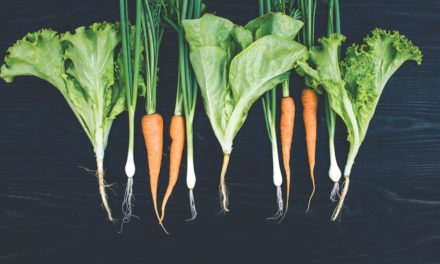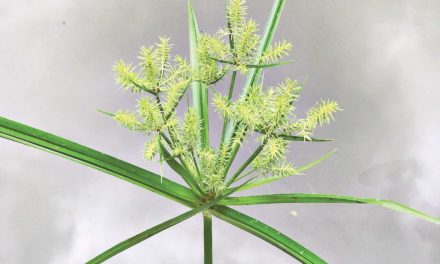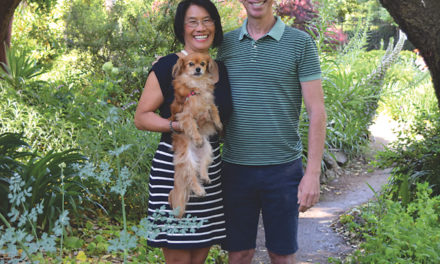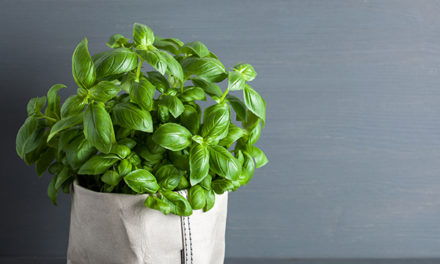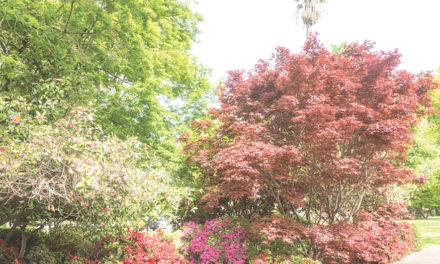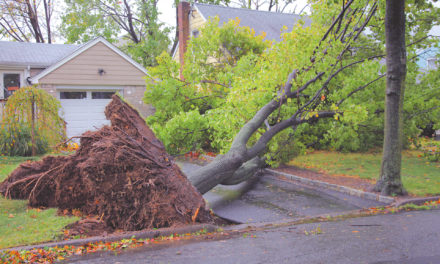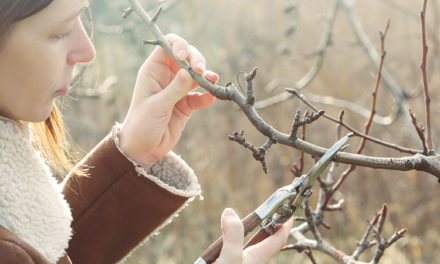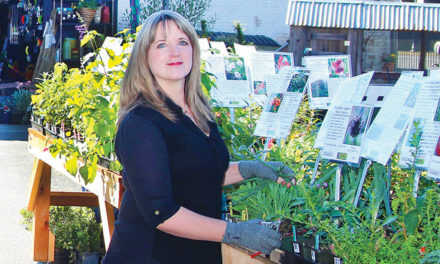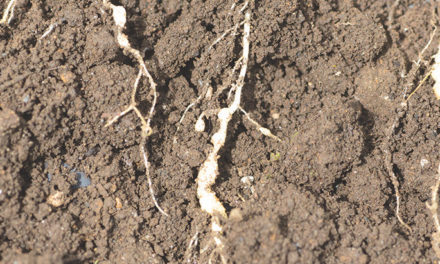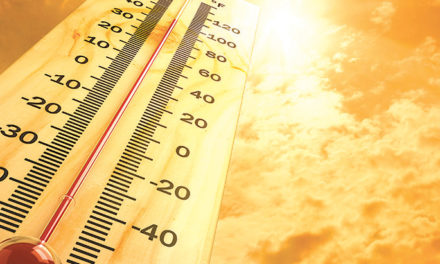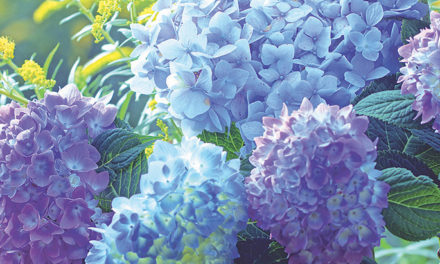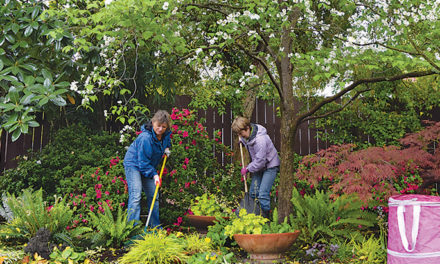More Plants, Less Mulch
Forgo woodchips for a tapestry of flora
By Anita Clevenger
August 2019
UC Master Gardeners tell the public that mulch works miracles in the garden based on university research that shows a thick layer of woodchips (at least 4 inches deep) will suppress weed-seed germination, retain moisture and improve the soil. I’ve repeated this advice many times, but have had some doubts.
You rarely see mulch in French or English gardens, for example. The French believe that roots need air, which a layer of mulch can block. The English plant so densely that there’s little open space for mulch, although they do apply copious amounts of compost.
In Sacramento gardens, I’ve observed that the roots of drought-tolerant plants, such as lavender, salvia and penstemon, will rot if they are kept constantly moist by a layer of woodchips.
I’ve also worried that covering up all bare soil with mulch, which UC Berkeley entomologist Dr. Gordon Frankie calls “mulch madness,” will make it hard for native bees to find places to nest.
When should we mulch? And when does mulching create more problems than it solves?
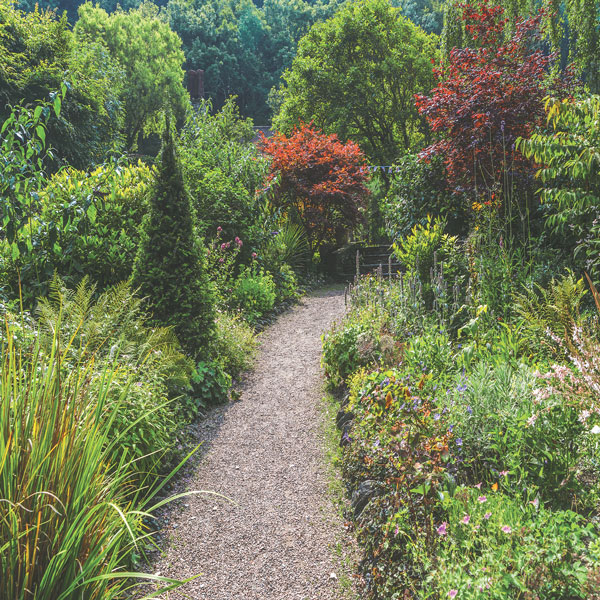
At a recent horticultural study weekend sponsored by The Hardy Plant Society of Oregon, experts and gardeners debated this point. Kelly Norris, director of horticulture and education at the Greater Des Moines Botanical Garden, suggested that gardeners should “write off” mulch. Instead, he advocated for using grasses and other plants as “green mulch and horticultural spackle” to form a “sustainable, living weft” under larger plants. His vision is for gardens that are managed, not maintained, with a focus on a wide range of closely planted diverse plants that are edited, rather than mulched gaps that are weeded.
The weekend featured visits to more than a dozen lush Portland gardens, several planted densely not mulched. One garden featured many familiar drought-tolerant plants thriving in mounds of gravel, which ensured the perfect drainage they demand.
Dr. Linda Chalker-Scott, a horticulture professor at Washington State University, had a different view. This was not surprising coming from a woman dubbed the “Mulch Queen” by her 8-year-old daughter years ago. Chalker-Scott based her recommendations on scientific research, and continued to champion mulch for most situations. She recommended woodchips, rather than bark or other materials. Bark has a waxy surface that is designed to repel water and discourage it from deterioration. Rather than an inert layer of mulch, the ideal is to have active fungal activity where mulch touches the soil and decomposes. That promotes development of mycorrhizae, which colonize the root system of a host plant, providing increased water and nutrient-absorbing capabilities. Asked about using leaves as mulch, Chalker-Scott responded that research is not yet definitive. Leaves break down through bacterial activity, not fungal, and can become slimy and anaerobic if piled too deep. Chalker-Scott shreds her fallen leaves before using them as mulch or putting them into the compost pile.
What about ground-burrowing native bees? Chalker-Scott recommended leaving soil bare underneath shrubs so bees can burrow there. This also allows oxygen to be more available for roots, and keeps mulch at least 4 inches away from the base of woody shrubs and trees to reduce the risk of root rot.
Chalker-Scott is not a fan of landscape fabric because it blocks that all-important contact between soil and mulch. Fabric eventually gets covered with decomposed organic matter and weeds, and can be so integrated with soil and roots that it is very hard to maintain. She doesn’t recommend pulling fabric out of a planting bed unless it is loose. To avoid damage to roots, it’s better to cut the fabric into pieces and leave it in place. Most of all, don’t use it in planting beds.
To mulch or not to mulch? Most of us think that we should mulch, but few enjoy the hard work it entails. Based on the science, mulching can benefit soil, but it’s not a panacea for all situations. Several speakers envisioned a trend toward landscapes consisting of interwoven tapestries of plants instead of widely spaced planting beds surrounded by a sea of woodchips. More plants, less mulch. Makes sense to me.
The Sacramento County UC Master Gardeners’ annual Harvest Day will be Saturday, Aug. 3, from 8 a.m.–2 p.m. at the Fair Oaks Horticultural Center, 11549 Fair Oaks Blvd., Fair Oaks. Speakers will discuss container gardens, fertilizers and tree care. Mini-workshops and demonstrations will be held on composting, water-efficient landscapes, grape growing and fruit orchards. Guests will also enjoy educational tables, food trucks and plants for sale. For more information, visit sacmg.ucanr.edu/harvest_day.
Anita Clevenger is a lifetime Sacramento County Master Gardener. For answers to gardening questions, contact the UC Master Gardeners at (916) 876-5338 or mgsacramento@ucanr.edu, or visit sacmg.ucanr.edu. Follow us on Facebook, Twitter and Instagram: @insidesacramento.






